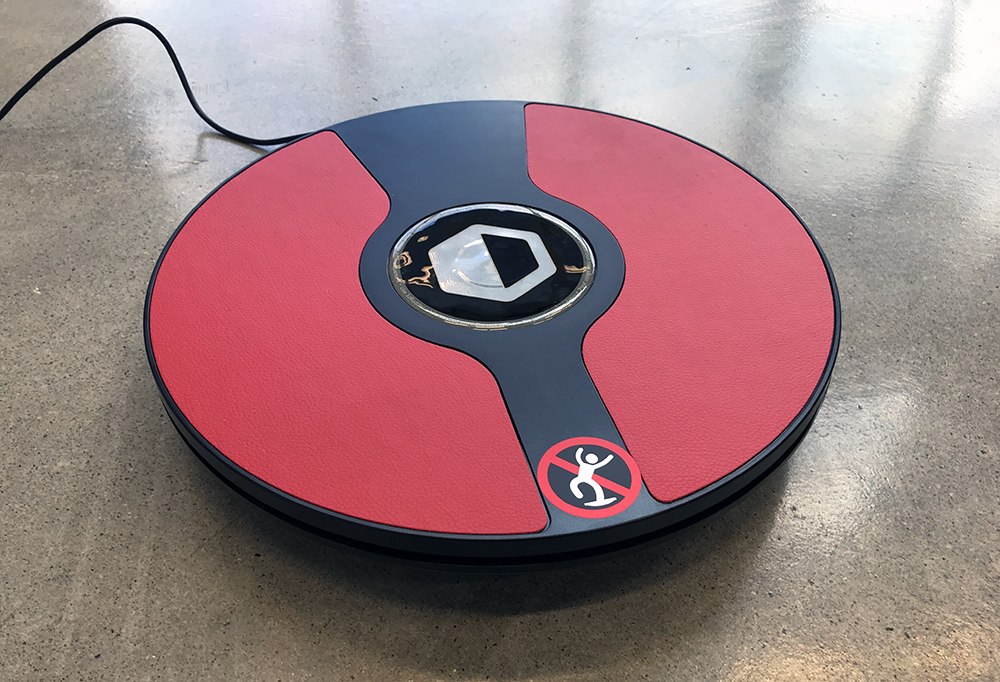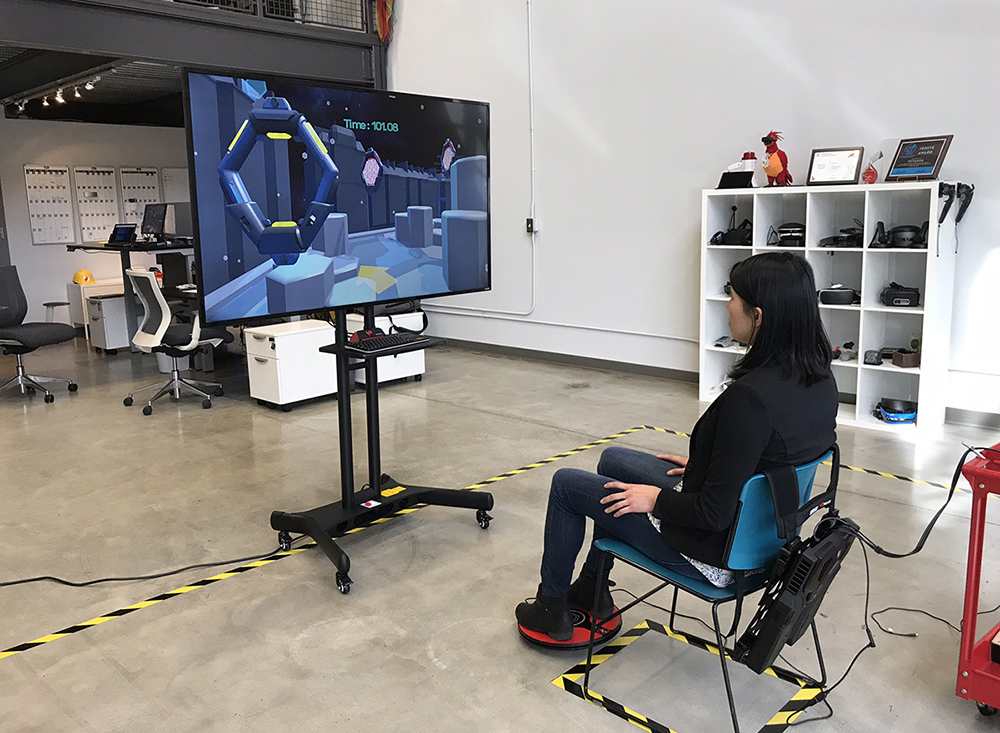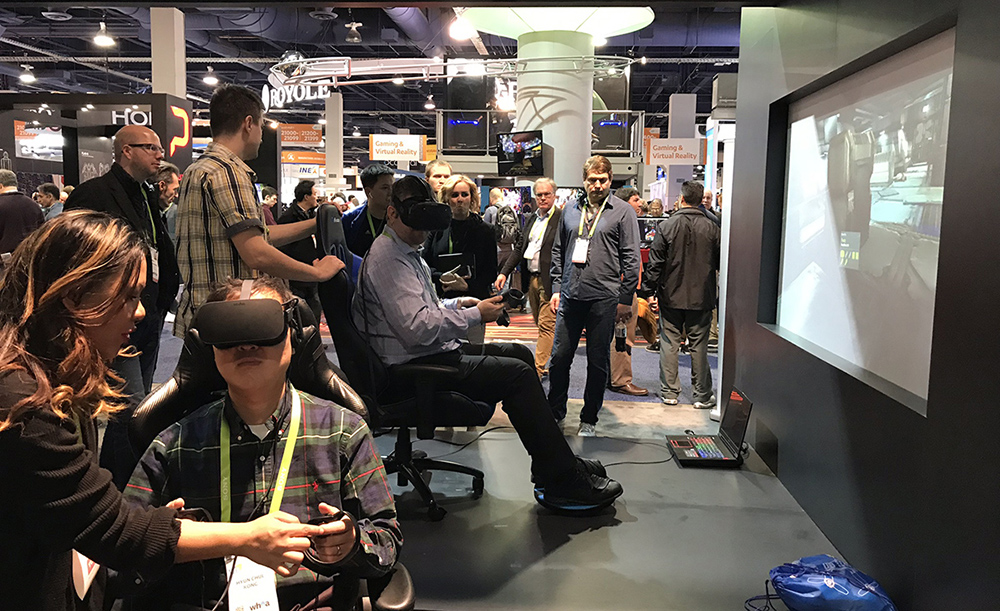
25 Apr A Look At The 3dRudder
We got our own 3dRudder a few weeks ago and couldn’t wait to try it out with our virtual reality set up. Instead of using your hands, like most VR controllers on the market, you use your feet to control your movement. This frees up your hands to use a controller to do other motions like grabbing, reaching and manipulating objects. My first time trying the controller was at CES in the Virtual Reality exhibit area in the Las Vegas Convention Center. There were a few different demos that you could try out. I sat down on a standard office chair on carpet – this is very important to point out because you don’t want to be rolling around – and put my feet on the 3dRudder platform. The controls seem to work best with flat shoes, wearing any sort of heel can make it slightly uncomfortable and challenging to accurately move around.

Setup
The setup was simple. We were prompted to go to the 3dRudder website to download the dashboard. It walked us through the setup and calibration process. There’s a USB 2.0 attached by a 6-foot long cable to the 3dRudder that plugs into a PC. We hooked it up to our MSI VR One backtop and had a little bit of difficulty because the cord wouldn’t reach. We ended up putting a chair in the middle of our room scale and setting the backtop on the ground next to us. People who are used to having a seated experience with a laptop or desktop computer won’t find this to be an issue. Once we downloaded the necessary software and plugged in the 3dRudder it took us through the calibration process. For this, we sat in a stable chair, bent our legs at a 90° angle, and put our feet flat on the 3dRudder surface. There was a series of beeps and a few instructions to follow. Once the short calibration process was complete we were ready to start using it!

Getting Acclimated
We started out by using the 3dRudder’s 2D demo to get used to how to move around. Most of the commands are intuitive but the Up and Down commands can be tricky.
Basic controls:
- Push onto your toes to accelerate and move forward
- Push onto your heels to move backward
- Rotate both feet to the right to turn to the right
- Rotate both feet to the left to turn to the left
- Put weight on your right foot to tilt to the right
- Put weight on your left foot to tilt to the left
- Left toe and right heel to go up
- Right toe and left heel to go down
The demo program guides you through an obstacle course which starts out easy and gets progressively more difficult. If you tend to get motion sick I would suggest starting with the 2D demo before jumping into VR so you can get used to the controls.

VR with the 3dRudder
According to their website, the 3dRudder works with any VR game. I tried it out with the Air Car VR experience where I was the pilot of a helicopter. The freedom to move around without being limited to room scale was a new feeling and is definitely something that would be useful for people who don’t have a large room scale. I kept accidentally moving my feet and triggering movement because of the shape of the 3dRudder. Moving forward, back, left, right, up and down felt great, however, I did experience some discomfort when rotating. Despite the temporary uneasy feeling, I would definitely use the 3dRudder again to play games that involved exploring the space at a leisurely pace.
Have you tried out the 3dRudder? Share your thoughts on Twitter using @TheFuturus.




